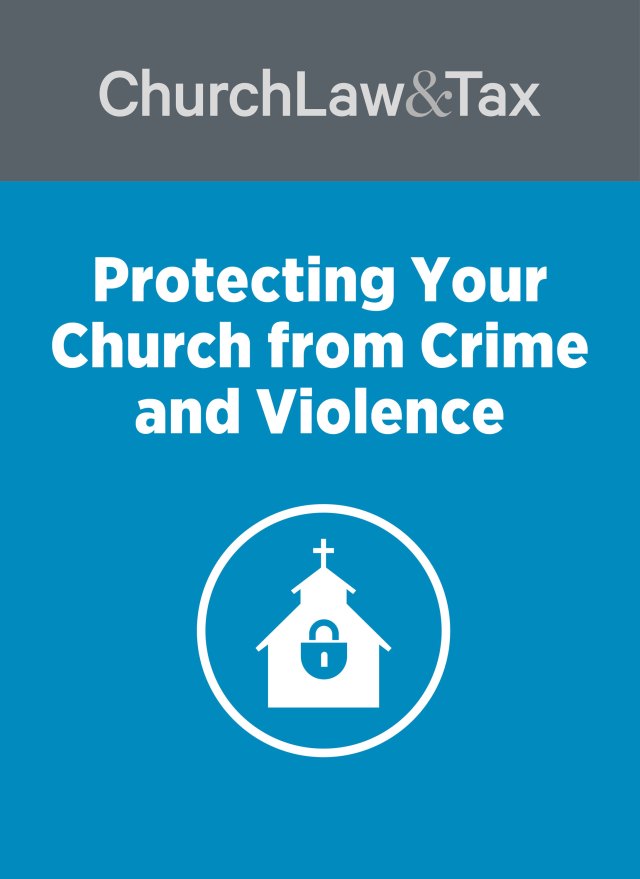Key Point. Video recordings made by church surveillance cameras may not be admissible as evidence in criminal prosecutions unless they comply with the conditions specified by state law.
A Georgia court ruled that a video recording of a burglary on church premises was admissible as evidence in the perpetrator's burglary trial.
Many churches have installed video cameras as both a deterrent to crime and a means of identifying persons who engage in criminal behavior. Video recordings may be admissible as evidence in criminal prosecutions, but there are conditions that may apply. A recent case illustrates this important point. A church custodian arrived at work to discover that the front door was damaged and a side window was broken. He immediately called the police. After the investigating officer arrived, she determined that someone had "busted in" the front door with a sharp object in order to gain access to the church. Inside, she observed that the church was in disarray and discovered that the church's safe had been taken outside the church and its door removed. She also found and collected blood droplets that she believed to have come from the perpetrator near broken glass from two interior office doors.
During her investigation, the officer learned that the church had a surveillance camera which monitored the hallway outside of the internal church offices. The camera was attached to a video recorder that was set to begin recording when any of three strategically placed motion sensors were triggered. After watching the videotape, the officer immediately went to arrest a man (the "defendant") depicted on the video whom she had known for 19 years. She found him hiding underneath a mattress in a bedroom of his brother's house. He had a small laceration on the palm of his hand.
The defendant was charged with burglary, and at his trial the prosecutor introduced into evidence both DNA test results and the surveillance videotape that clearly showed the defendant committing the burglary. The defendant was convicted and sentenced to prison. He appealed, claiming that the court should not have admitted the surveillance tape into evidence because the tape did not contain the date and time of the recording. A state law specifies that videotapes created by unmanned cameras shall be admissible in evidence when the court determines, based on competent evidence presented to the court, that such items tend to show reliably the fact or facts for which the items are offered, provided that prior to the admission of such evidence the date and time of such … videotape recording shall be contained on such evidence and such date and time shall be shown to have been made contemporaneously with the events depicted in the … videotape.
The court acknowledged that the surveillance tape "did not contain a date and time in strict accordance with the terms of that statute." However, it pointed out that the same statute provides that "this section shall not be the exclusive method of introduction into evidence of videotapes but shall be supplementary to any other statutes and lawful methods existing in this state." The court noted that prior decisions of the state Supreme Court "have affirmed trial courts' admission of videotapes, in circumstances such as in this case, where even though there are no contemporaneous date and times on the videotapes, there is other evidence of reliability." The court concluded:
The trial court was presented with sufficient evidence from which it could be inferred that the tape reliably depicted the burglary taking place. The church custodian testified that on the morning of the burglary, he unlocked the box containing the videotape in the presence of the investigating officer. The investigating officer personally removed the videotape from the recorder and placed it into evidence. Her investigation subsequently revealed that the videotape contained footage from the day of the burglary as well as the previous day. On the tape, she personally observed the defendant, whom she had known for 19 years, breaking the window inside of the church. The church custodian testified that he had been at the church the previous evening and found the church to be in good repair. Finally, the technician who had installed the security system described how the camera operated and explained that it had been programmed to record for four-minute periods of time after being activated. He concluded after watching the video that the camera had performed properly as it was designed to do …. Under these circumstances, the trial judge did not abuse his discretion by admitting the videotape into evidence and concluding that the absence of a date and time on the tape itself would go to the weight, not the admissibility, of the evidence.
What this means for churches
This case illustrates an important point. Churches that use video cameras for the preservation of evidence should understand that state law may prescribe conditions on the use of video recordings in criminal prosecutions. If your church uses video cameras, be sure to check with an attorney, or your local prosecuting attorney's office, to determine what conditions apply to the use of video recordings in criminal prosecutions in your state. Failure to comply with such conditions may negate the primary purpose of using a video camera in the first place. Holloway v. State, 653 S.E.2d 95 (Ga. App. 2007).
